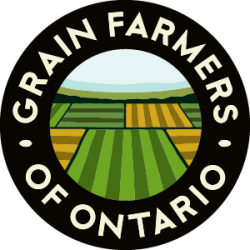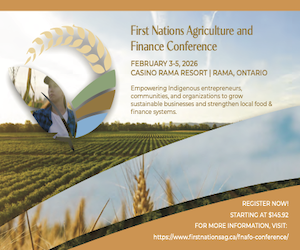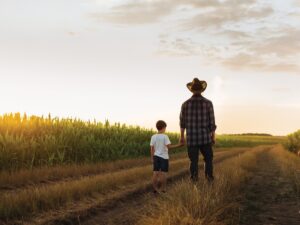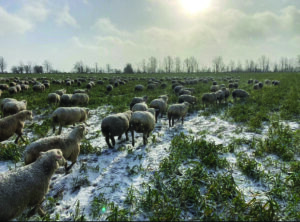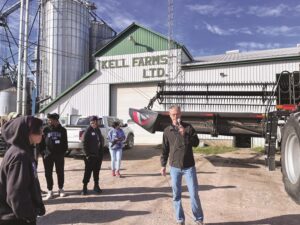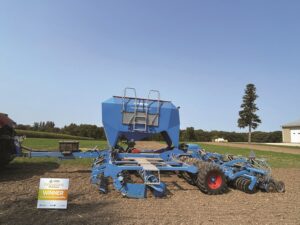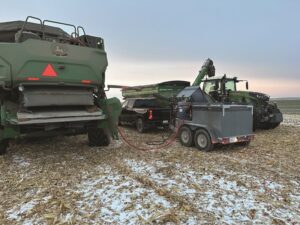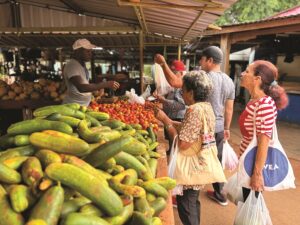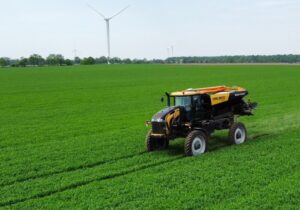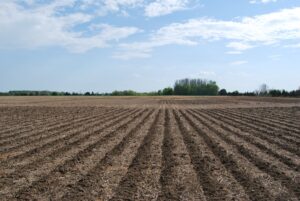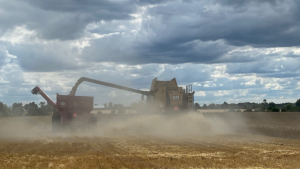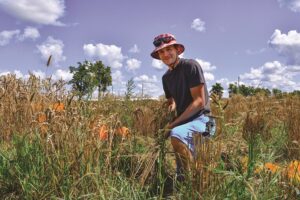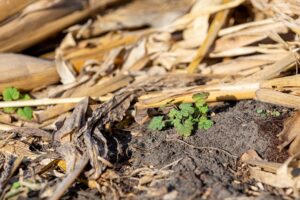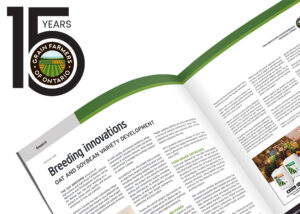Bridge Into Agriculture
UNIQUE PROGRAM FOR NEW ENTRANTS TO AGRICULTURE
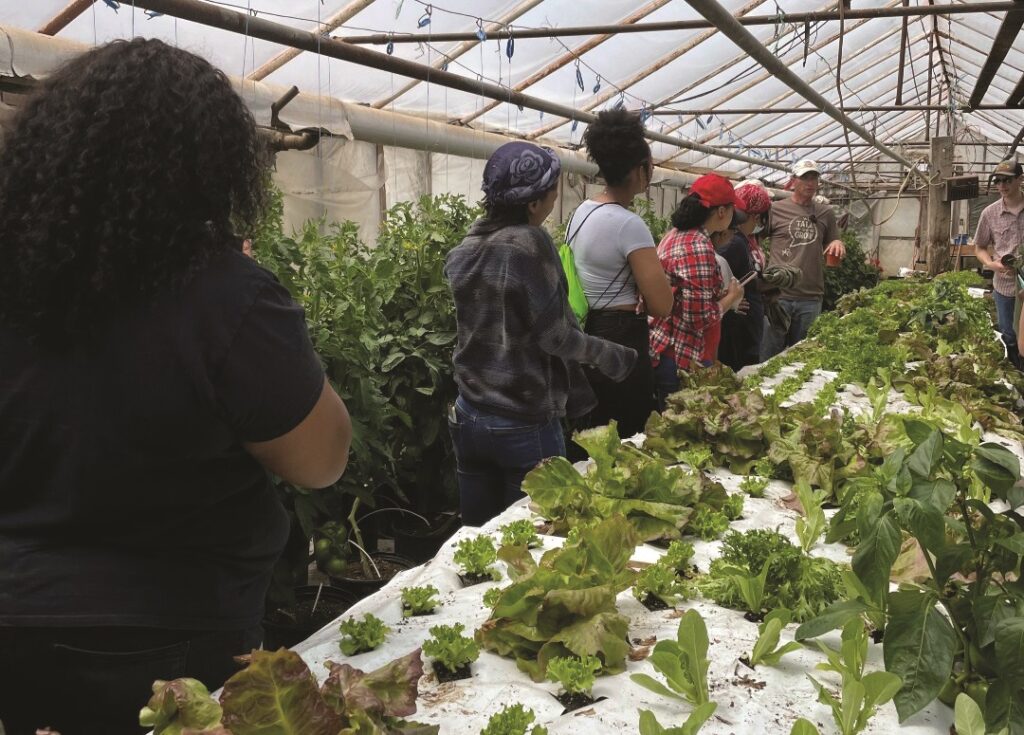
At Dalhousie’s Truro Campus, home to its Faculty of Agriculture, students engage in a wide range of agricultural learning, including business, economics, plant sciences, and aquaculture.
The campus has a long history; formerly known as the Nova Scotia Agricultural College, founded in 1905, the campus became part of Dalhousie in 2012.
Among the unique courses of study for Nova Scotians is its Bridge Into Agriculture program; started in 2022, Bridge Into Agriculture is a 22-week program hosted by the Extended Learning Department of the Dalhousie Faculty of Agriculture to help bridge the gap between African Nova Scotian communities and agriculture.
Established in partnership with African Nova Scotian Affairs, the Nova Scotia Federation of Agriculture, the Nova Scotia Department of Agriculture, and Dalhousie University Extended Learning, program participants engage in hands-on learning by planting and growing food in gardens and learning about topics such as soil health, plant nutrition, crop rotation, and pest control; farm tours and guest speakers expose learners to the many opportunities in the agriculture sector.
AFRICAN NOVA SCOTIAN HERITAGE
The African Community has a long history in Nova Scotia, stretching back over 400 years. The Black Cultural Centre for Nova Scotia and the African Nova Scotian Museum shares a timeline of African settlement in the province; in 1605, Mathieu daCosta, an Afro-French member of the Champlain expedition, was the first African known to visit what is now known as Canada. Waves of migrants, including those fleeing slavery after the British Empire abolished the practice in 1833, made their home in the province, establishing 52 historically Black communities, including Shelburne, Africville, and Cherry Brook. In the 1920s, Caribbean immigrants flocked to Cape Breton to work in coal mines and steel factories. Until 1961, more than half of all Black people in Canada lived in Nova Scotia, with the Province of Nova Scotia identifying Black Nova Scotians as a founding culture.
Black Nova Scotian communities have been subjected to structural, systemic, and individual discrimination throughout their history; Matthew McRae, in The Story of Africville, highlights that in the mid-20th century, residents weren’t afforded basic services that other Nova Scotians enjoyed, such as sanitation, clean water, or garbage disposal. Schools in Nova Scotia were legally segregated until 1954, and de facto segregation was enforced in many public settings. The inequality persists; in 2023, the African Nova Scotian Prosperity and Wellbeing Index indicated that Black Nova Scotians experienced higher rates of unemployment and poverty and lower after-tax income than non-visible minority residents.
OPPORTUNITIES IN AGRICULTURE
According to the Nova Scotia Federation of Agriculture, the Nova Scotian agriculture sector experiences significant labour challenges, with 39 per cent of farm businesses reporting difficulty in finding locally qualified labour and 35 percent experiencing a shortage of experienced local workers.
“Increasing diversity in the agricultural industry is crucial for the future resiliency of our food system, said Nova Scotia Agriculture Minister Greg Morrow of the Bridge into Agriculture following the launch of the Bridge into Agriculture program in 2022.
“The Department of Agriculture is excited to participate in the Bridge into Agriculture training project to help increase food growing skills in the African Nova Scotian community and to inspire community members to consider agricultural careers and entrepreneurship,” he added.
AN ONTARIO PERSPECTIVE
People from marginalized communities face similar challenges in Ontario, says Angel Beyde, strategic partnership and eastern Ontario director with the Ecological Farmers Association of Ontario (EAFO). Beyde co-facilitates EFAO’s Network for Black, Indigenous, and farmers of colour, formed to support farmers who face ongoing systemic marginalization due to racism.
The Network, which started with 40 people engaged in a consultation in 2020, has grown to a membership of about 180; made up of EFAO community members, including farmers, land stewards, and those engaged in food/farming-related work, the Network offers virtual and in-person networking and learning opportunities.
Access to land and capital, says Beyde, is one of the biggest barriers; she estimates that more than 60 per cent of the group members are landless, with many others in precarious leasing situations. There are limited government programs and other resources designed to provide financial (or other) support to small-scale farmers and those that exist don’t tend to address structural barriers faced by the racialized farmers in the Network.
“The feedback we’ve gotten is that most of the Network members do not have access to inherited land or family roots in a rural community, which are two factors that would make starting a small farm enterprise much more doable. Furthermore, there are many, many obstacles to applying for the limited loans, grants and other financial supports that exist. Just one technical example is that many programs require a business registration number. This in turn requires the farmer to have an income of $7,000. New entrant farmers without the support of inherited land are often working off-farm full time, because they need to have enough income to pay the bills and raise capital for the farm enterprise, and it is a challenge to make $7,000 selling vegetables from, for example, a rented quarter acre plot while you’re also working full time doing something else.”
“And while these are issues for all farmers, they’re really exacerbated for farmers who are facing these systemic barriers,”
Looking ahead, Beyde says EAFO wants to ensure that Black, Indigenous, and people of colour have their voices heard when it comes to advocacy for a new entrant strategy to be part of the next five-year Sustainable Canadian Agricultural Partnership (SCAP) that launches in 2028.
“It’s become clear that we really need agricultural programs that have an equity lens, that specifically support new entrants to get into and stay in farming and reduce the barriers like access to land, to capital, to knowledge,” she says. “[Members need support] to navigate the sector, adapt to climate change, and then as well, policies that recognize and support the need for wraparound supports like mental health, housing and labour.”
Find out more about EAFO’s Network for Black, Indigenous, and people of colour at efao.ca/bipoc-farmer-network.
February is Black History Month. To learn more about the history of Afro-Canadians, visit https://www.canada.ca/en/canadian-heritage/campaigns/black-history-month.html. •

